Remote sensing adds precision to reforestation work
“When you stand in the forest, you see the trees, not always the forest itself. The satellite gives you this bird’s-eye perspective on a large scale.” – Valentin Louis
For decades, monitoring of forest conservation success and forest restoration efforts was a ground-level game, relying on field teams and localized surveys. But what if you could monitor the health of an entire forest, across thousands of square kilometres of difficult terrain, from an office? What if you could see not just what is happening now, but how the landscape has changed over the past 50 years?
This is the power of remote sensing. It’s a technology that can be extremely useful in protecting and restoring the world’s forests. By linking remote sensing images with ground-based work we can better understand what we see from the satellites. With its wealth of information, it’s an excellent decision support tool, and WeForest is using it for these purposes.
What is remote sensing?
We asked WeForest’s Geospatial Data Scientist, Valentin Louis to break down this technology. “Remote sensing is a tool that takes images of the Earth’s surface, whether by satellites, planes or drones, from regular monitoring to one or target snapshots on a global scale and local scale,” he explains. “At WeForest, we mostly work with satellite images.” By analyzing different light spectra, from visible red and green to infrared and radar, satellites can reveal secrets about vegetation health, water content, and even soil characteristics.
“With active sensors like radar, which send out their own pulses of light or microwaves, we can see through clouds and map the surface day and night,” Valentin added. “LiDAR (a remote sensing technology) is particularly precise for measuring the height of trees, something very useful in forest management”.

Managing forests from the sky
So, how can this accelerate forest monitoring? The answer lies in scale and time.
Firstly, it can be useful for monitoring remote areas. “In some areas that are really difficult to reach, because they are very remote, it is challenging to get there as often as we want on foot. With satellites, we can access all of them much more frequently and see how the forest evolves,” says Valentin. This is crucial for tracking progress on remote and large-scale project sites.
Remote sensing also allows us to directly quantify the forest’s growth and recovery. In our restoration projects satellites can measure this through increased “greenness” or, using radar, increased “volume scattering” as the forest recovers/grows. Conversely, they provide an early warning system for deforestation or in areas where saplings or younger trees are struggling.
Finally, it enables us to make sound adaptive management decisions for project implementation if needed. This is where data derived insights become action. “If we see that we don’t have the expected growth rate, then we can use that information and adapt our management strategies and act in timely manners at targeted locations,” explains Valentin.
The challenges: clouds, costs, and complex terrain
However, remote sensing also comes with a few difficulties. Our geospatial data analyst highlighted that data verification could be an issue. “Linking the observation that we see from the satellite to the ground is sometimes tricky.” To solve that, WeForest works closely with field teams to regularly confirm what the satellites see and continuously improve the machine learning models.
In hilly landscapes like Desa’a in Ethiopia, one of our project areas, shadows from the sun make analysis difficult. It is harder to have a clear view of the ground. The nature of the forest in the region itself can also be an issue. In slow-growing Afro-montane forests, patience is key, as change can be too gradual for satellites to detect year-to-year.
And, while open-source data (like the 10m-resolution Sentinel-1 and Sentinel-2) is “pretty good for most applications,” high-resolution imagery is expensive but would be nice to have for a more detailed view of forest dynamics. “This is where the Airbus Foundation basically jumps in.”

The Airbus Foundation’s Call for Projects grant
A major milestone for WeForest’s geospatial approach was being awarded the Airbus Foundation Call for Projects grant themed “Harnessing Aerospace Capabilities for Nature-based Climate Resilience”. Valentin Louis, who submitted the winning proposal, credits WeForest’s robust ground data.
“We applied to assess the impact of soil and water conservation activities in Desa’a, Ethiopia. We have really thorough on-the-ground data there. It’s very rare to have good, systematically collected reference data that can be compared and validated by the satellite images. I think this made the proposal stand out.”
More than the prestige, this partnership grants access to very-high-resolution imagery (down to 30cm resolution and even 15cm enhanced imagery), which will allow for detailed monitoring in the coming years, a big benefit for the Desa’a project.
Our mission is to decode the link between forests, land and water. How does a newly planted tree affect water soaking into the soil? Does a specific intervention lead to a greener, healthier forest patch? Does it lead to more water availability? By analyzing satellite data from 2019 to 2024, and tracking progress all the way to 2030, we can connect the dots. We can see the direct impact of our restoration work, painting a clear picture of how revitalizing the landscape reshaped and will shape the local water cycle.
In this sense, the satellite images will be essential to help us monitor, learn and adapt. By truly understanding the dynamics between water retention, soil moisture and vegetation, we can strategically plan our future interventions, ensuring every effort in the Desa’a forest is a smart investment in a more resilient and water-secure future.
By marrying on-the-ground measurements of soil moisture with the bird’s-eye view of satellite maps, we can see the forest not just as a collection of trees, but as a living, breathing system.
Do you want to be part of our efforts in Desa’a and other regions? Contact us at partnership@weforest.org













